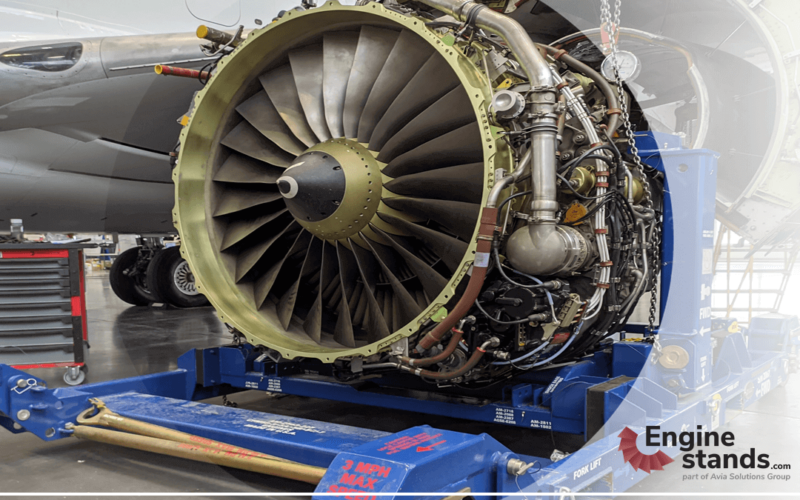Increased global passenger traffic, rising investments in infrastructure, and extensive research and development efforts by the leading industry players are the major factors driving the growth of the global aircraft engines market, at the same time increasing the need for engine storage and transportation.
An aircraft engine can cost anywhere from one to tens of millions of dollars, therefore ensuring their safety at any given time is of the most importance. Even the smallest damage to an engine can cost airlines, MROs, lessors, or traders not only huge sums of money required for repairs but also costly delays. To avoid that, experts advise using only high-quality certified engine stands, with all required inspections and checks completed, that can ensure the safety of such a valuable asset as an aircraft engine.
“Engine stands are most commonly used for engine storage, transportation, swap, inspection and maintenance,” explains Hanna Lavinskaja, Chief Business Development Officer at Enginestands. “There are original equipment manufacturer (OEM) approved and non-OEM approved engine stands. To get licenses to produce stands with OEM mark of approval, engine stands manufacturers have to ensure that their products qualify with Engine OEMs and meet all of the specific requirements of transportation, removal, installation, and other operations,” Lavinskaja shares. “Additionally, each stand has a very certain maintenance plan according to the manufacturer‘s recommendations and every engine stand owner has to follow the plan in order to get its Certificate of Conformity (CoC) renewed every year as proof of proper maintenance and serviceability of an asset.”
According to Hanna Lavinskaja, while most of MROs and Engine shops accept engines only on OEM-certified engine stands, some companies use noncertified stands in some specific situations, for example when sending an engine for a teardown or long-term storage. “The main possible negative outcome of using a stand without certification is the damage to an engine and monetary issues arising from such issues. MRO or Engine shop refusal to accept an engine for planned tasks, that is loss of slot, is also a possible problem. While accidents can still happen when using an OEM approved engine stand, OEM mark of approval gives operators peace of mind knowing that an extremely valuable asset is being transported on a top-quality piece of equipment.”
As an expert in the field, Enginestands use only certified engine stands. “It is true that offering only certified engine stands and maintaining their quality is a difficult and expensive task but providing noncertified stands could have detrimental outcomes. Our clients trust in our ability to provide exceptional quality assets, thus ensuring the safety of their valued aircraft engines.”

